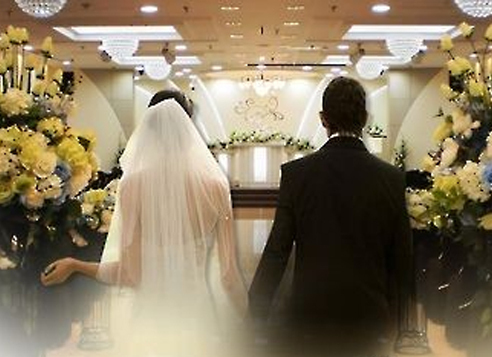The number of single households is continuing to spike as more Koreans live away from their families, while the country’s marriage rate continues to nose-dive.
According to a survey released by Statistics Korea on Wednesday, the number of single-person households in the second half of 2016 reached roughly 5.27 million as of October last year, up 3.3 percent from the previous year.
The data showed that the number of married people living alone hit 3.12 million or 59.1 percent of all single households, outweighing the number of unmarried single-person households here, which accounted for 40.9 percent.
 |
(Yonhap) |
Out of all households, the total proportion of those living alone rose by 0.6 percentage points, bringing the total to 27.8 percent in the second half of last year.
The number of Koreans living solo has been on the rise for the past couple of decades, reaching 20 percent for the first time in 2005. In 1980, single households only accounted for 4.8 percent of all homes.
According to Statistics Korea, women make up the majority of single households at 56.5 percent, compared to 43.5 percent for men.
The continued spike in the proportion of single households is widely attributed to the trend of staying single or marrying late.
Last year the number of married couples here plummeted to 281,700, the lowest level since 1970. The average age of first-time brides hit a record 30.1 years, while the average age of first-time grooms was 32.8 years old.
As for the number of employed people among single households, the figure rose by 2.3 percent, or 2.9 million, last year compared to the previous year. However, the data showed that only 55.1 percent of all single households are employed.
Of the employed single households, the 30 to 39 age group accounted for the highest proportion of employment at 22.6 percent, followed by the 60 and over age group at 22.2. Those ranging in age from 40 to 49 recorded the lowest employment rate at 16.9 percent.
The recent survey also revealed that the number of dual-income households in Korea reached 44.9 percent in the second half of last year, recording a 2.4 percent increase compared to the same period in 2015.
As of October last year, the total number of married households was 11.8 million. Of these households, roughly 5.3 million accounted for dual-income families, an increase of 125,000 from the second half of the previous year, the survey said.
Jeju Island recorded the country’s largest proportion of dual-earning households at 60.3 percent, compared to Seoul’s 40.1 percent, the second lowest after Busan and Ulsan’s 37.6 percent.
The data also showed that among Korea’s dual-income households, men work on average 5.7 hours more per week than women. The average number of working hours for Korean men was 45.9 hours a week, down from 46.7 hours in 2015. Korean women recorded an average of 40.2 working hours a week, down from 40.9 the previous year.
By Julie Jackson (
juliejackson@heraldcorp.com)








![[Today’s K-pop] Blackpink’s Jennie, Lisa invited to Coachella as solo acts](http://res.heraldm.com/phpwas/restmb_idxmake.php?idx=644&simg=/content/image/2024/11/21/20241121050099_0.jpg)